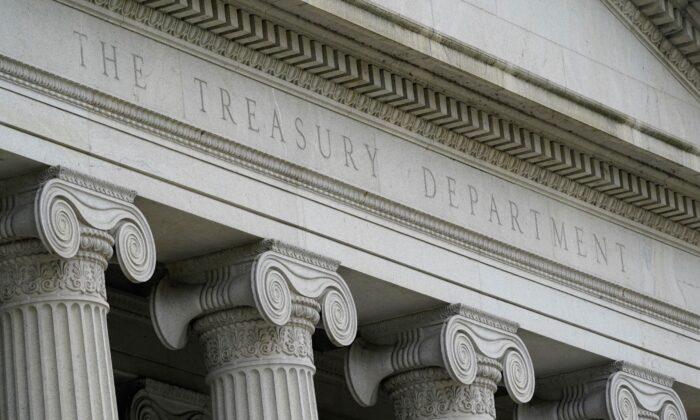Social Security, a mandatory retirement program with some 65 million beneficiaries and 176 million covered, is inferior to private sector retirement saving alternatives, according to critics. They warn Americans not to over-rely on it to fund retirement. And some also claim it’s a bad investment, especially for young people.
“Over their lifetimes, a couple born around the year 2000 and earning an average wage earner can only expect to get 90 cents out of Social Security for every dollar they put in,” writes Charles Blahous, a former Social Security trustee now with the Mercatus Center at George Mason University. Still, he contends promises can be kept to the young with some adjustments. Those in the older generation should make sacrifices, he says.
“It’s a raw deal,” Rachel Greszler, a Heritage Foundation scholar and co-author of the report said of Social Security. “We are telling young people to put money into this program that guarantees zero or negative returns,” she told The Epoch Times. Greszler supports privatization. Her group is preparing a plan.
Social Security officials did not respond to requests for comment.
Blahous says Social Security is no longer a retirement saving program, but an income transfer program.
“Older generations,” Blahous notes, “generally receive more in Social Security benefits than they paid for with their own taxes. Lawmakers face the delicate task of spreading out other generations’ income losses as evenly as possible, so that no generation of Americans is unusually disadvantaged. In sum, Social Security is redistributing income from poorer, younger workers to better-off, older ones.”
The solution, Greszler said, is private investments. They are better in accumulating retirement assets.
By contrast with projected negative Social Security returns, the long-term stock market record is superior. Going back a century the long-term annual stock market return is some 9.5 percent, according to the book “Stocks for the Long Run” by Professor Jeremy Siegel.

Another Social Security debate is over the system’s health. In the 1970s and 1980s, with frequent payroll tax increases, a booming economy, and lots of new workers, Social Security had big surpluses. But both Republican and Democratic governments borrowed surpluses to reduce deficits. However, for the last decade, owing to fewer workers, people living longer and the borrowing of previous governments, the system is in the red.
This year, in the latest Social Security Trustees report, the program’s combined Old Age Survivors Insurance (OASI) and Disability Trust (DI) ratio of reserves to payments is falling.
Declining reserves, Social Security officials say in the report, would mean a 20 percent cut in payments in about a decade. Social Security, Greszler noted, has $19.8 trillion in unfunded obligations and they are growing.
“At $19.8 trillion in 2020,” she added, “the Social Security and DI programs’ unfunded obligation amounts to $154,000 for every household in the U.S.”
This is not Social Security’s first crisis.
In both the Carter and Reagan administrations, bipartisan solutions were enacted to save the system. They included benefit cuts and higher taxes. For example, before the Social Security reforms of the 1980s, no one paid taxes on Social Security payments. Now most recipients pay taxes when they receive benefits.
Social Security taxes, collected through payroll taxes, are 12.4 percent, divided evenly between the employee and the employer except in the case of the freelancer. In the latter, the worker directly pays the entire tax. This tax has been criticized as regressive because, for millions of Americans, it is their biggest tax.

Social Security critics over the decades have contended that trust fund reserves have been arrogated. One such critic, economist Murray Rothbard in his 1970 book “Power and Market,” argued Social Security was a form of “double taxation.”
In a 2019 interview, Social Security Chief Actuary Stephen Goss conceded shortfalls but suggested lawmakers will fix them.
“Between now and 2035, the Congress will need to act,” Goss said, “either raising the amount of revenue scheduled in the law, or lowering the level of benefits or some combination of these approaches.”
However, advisers offering retirement services often say don’t wait for Congress. Private retirement savings should be the bulk of a retirement plan, they say.
Charles Hughes, a Bay Shore, New York adviser, cautions clients on Social Security.
“If a client is expecting to get most of his income from Social Security, then there is very little I can do to help.” Hughes contends Social Security should be less than 50 percent of anyone’s retirement income.
“I tell people to be very conservative about Social Security payments in building a retirement plan,” said Ronald Roge, a Bohemia, New York adviser. “It should be no more than a third of your income.”
Hughes believes “guaranteed income” is the key in constructing an effective retirement plan. He predicts higher Social Security taxes. And that, he added, comes at a time when many Americans either don’t save enough for retirement or don’t have enough retirement income. Those factors, Hughes said, could hurt retirees and those saving for retirement.





